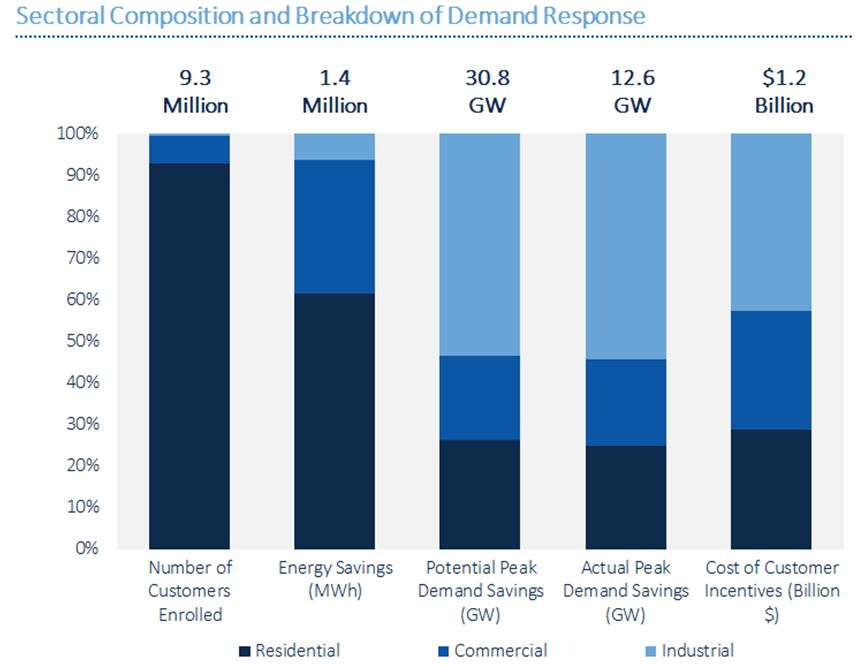The $1.4 billion U.S. demand response market is entering a new era driven by innovation and an increasing penetration of distributed resources. According to a new report from GTM Research, U.S. Wholesale DER Aggregation, Q1 2016, wholesale electricity market operators in the U.S. are developing new energy services and opportunities to attract and optimize the use of traditional demand-response distributed energy resources (DERs) like load control and backup generation in conjunction with newer resources such as distributed solar, electric vehicles and energy storage.
The growth in DERs and changing requirements within wholesale power markets are prompting utilities and independent system operators (ISOs) to create market opportunities for these resources that extend beyond traditional use cases such as managing peak power demand. Today, demand response and distributed resource optimization are increasingly considered to be standard system operation procedures.
“The provision of aggregation services is quickly extending beyond load reduction and backup generators, and toward the optimization of various resources unlocking the value of DERs and the consumerization of energy delivery,” states Elta Kolo, a grid analyst with GTM Research and lead author of the report.
According to the analysis of EIA data in the report, $1.2 billion in demand response incentives are distributed to U.S. customers annually. ISOs and regional transmission organizations collectively operate approximately 60 percent of the U.S. power system, with over 32 gigawatts of demand response flexibility at their disposal. The report focuses on PJM, MISO, CAISO and ERCOT territories, which together account for over 80 percent of all wholesale demand response.

Source: GTM Research's U.S. Wholesale DER Aggregation, Q1 2016, EIA
The new report describes current demand response regulation, market activities, and innovative pilots involving DER aggregation across the United States. It's the first in a new quarterly series on U.S. DER aggregation.



